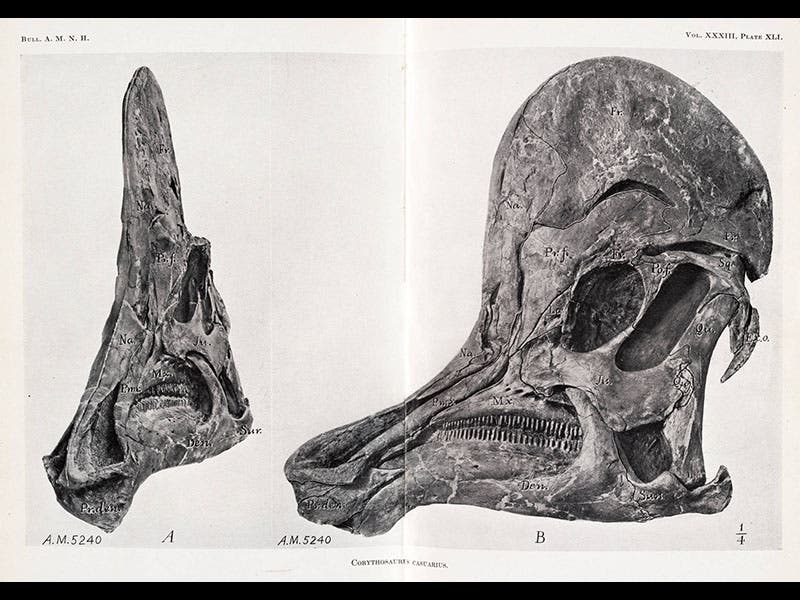Scientist of the Day - Barnum Brown
Barnum Brown, an American dinosaur collector, was born Feb. 12, 1866, in Carbondale, Kansas. Brown is often considered the greatest dinosaur hunter of the Golden Age of dinosaur discovery (which covers roughly the period between 1875 and 1925), primarily because he found the first Tyrannosaurus skeleton in 1902, and if that were not enough, he found the second one as well, an even better specimen, in 1908. We featured Brown’s T. rex in our Paper Dinosaurs exhibition.
But Brown was not a one-dinosaur sort of guy--he found other specimens, many of them first-of-a-kind, that are just as remarkable as the two tyrannosaurs. For example, after ten years of hunting in Montana (T. rex territory), Brown moved on to the Red River area of Alberta, Canada, and there, in 1912, he found a new kind of hadrosaur (a duckbill dinosaur). This one had an elaborate crest on its head like a Spartan Hoplite (or the Michigan state mascot, if you prefer), which resulted in its name: Corythosaurus, the helmeted dinosaur. The specimen Brown discovered was almost perfectly preserved; it seemed to be in a swimming position (which led Brown to argue that it was a swimmer), and it had remnants of skin and some tendons on its tail, not a common occurrence in dinosaur finds. We see above, from Brown’s 1914 paper on his find, a view of the fossilized Corythosaurus and its reconstructed skeleton (first image); the wonderful helmeted skull (second image); and a scene in which the habitat of Corythosaurus has been reconstructed (third image). You may see the real skeleton in the exhibition halls of the American Museum of Natural History, still swimming its way through time (fourth image).
Dr. William B. Ashworth, Jr., Consultant for the History of Science, Linda Hall Library and Associate Professor, Department of History, University of Missouri-Kansas City. Comments or corrections are welcome; please direct to ashworthw@umkc.edu.










